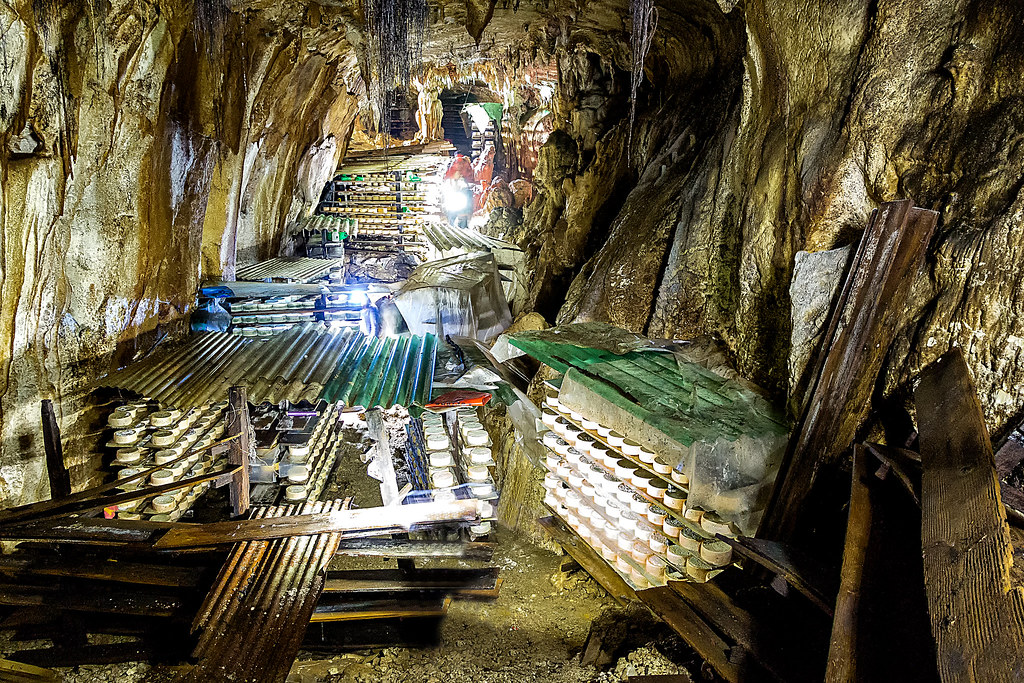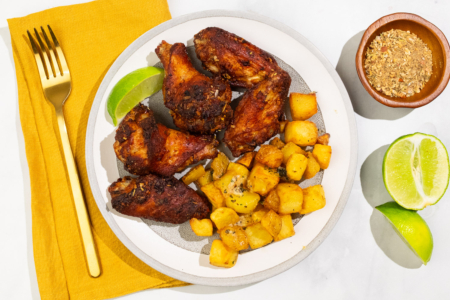Nestled into the northern coast of Spain sits Asturias. This principality is part of an area known as España Verde, or Green Spain, known for its lush landscapes, thriving forests, and mountainous peaks. With temperatures that rarely exceed 70°F and steady rainfall, this region is more reminiscent of Ireland or coastal England than Spain. All of these conditions make for exceptional cheese making, especially for a super-blue cheese like Cabrales.
The Caves of Cabrales
Cabrales (pronounced, kah-BRAH-lays) is made either exclusively from cow’s milk or with the more traditional blend of cow, sheep and goat’s milk. The creamy curds are pressed into round molds, lightly washed in a briny solution, and placed in airy limestone caves for aging. It’s within these caves that the magic happens. Naturally occurring penicillium molds found within the caves attach themselves to the cheese. As the cheese ages for 2-6 months, the mold penetrates the cabrales creating that characteristic veiny, blue-green mottling. Unlike other blues, Cabrales does not need to be injected with the mold to jump-start the process; it’s all in the caves.

What does Cabrales Cheese Taste Like?
Cabrales is one of the strongest and most intensely flavored blue cheeses. These accolades are not dolled out carelessly, considering the pungency of the blue cheese group as a whole; cabrales is a super blue. The texture is smooth and creamy, even though the cheese is moderately crumbly, with a fat content hovering around 45%. The high fat content gives cabrales a melt-in-your mouth quality. The aromas of the cheese are strong with notes of damp earth, which is typical of mature blue cheese. The flavor is piquant, acidic, and salty. This is a cheese worth seeking out if you are a blue cheese fan.

Cooking with Cabrales
Most specialty cheese shops will carry cabrales. If not, there are several online cheese retailers that can ship wedges to you. Cabrales has a pretty extensive shelf life; as long as it is tightly sealed and refrigerated, it should last for several months. This longevity makes this ‘extra’ blue cheese a nice ingredient to have on hand.
Cabrales performs well crumbled over salads, especially salads with sweet ingredients like apples, pears, or beets. The most traditional pairing is Cabrales and steak. Either the cabrales is crumbled over the steak or made into a creamy sauce. If eating cabrales solo or as part of a cheese platter, keep the sweet theme in mind and pair with figs, honey, or aged Sherry.




